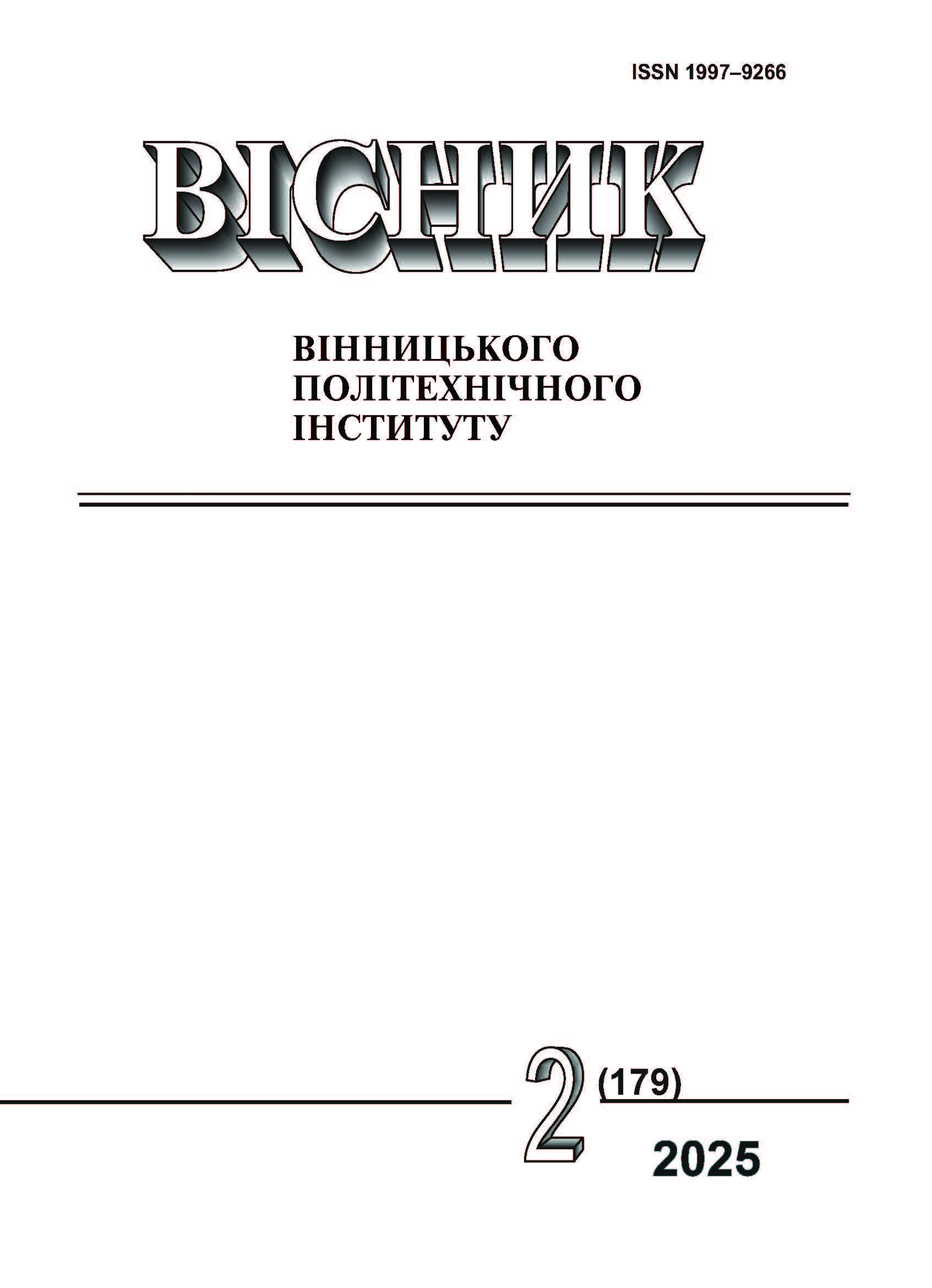ЗАСТОСУВАННЯ АДАПТИВНИХ ГІПЕРМОДЕЛЕЙ У ЗАДАЧАХ РЕ-ІДЕНТИФІКАЦІЇ ЛЮДИНИ
DOI:
https://doi.org/10.31649/1997-9266-2025-179-2-138-146Ключові слова:
повторна ідентифікація, гіпермоделі, динамічна адаптація, інкрементне навчання, CNN, Transformer, OSNet, Market-1501, DukeMTMC-ReID, MSMT17Анотація
Проаналізовано наявні підходи до розробки та впровадження адаптивних гіпермоделей у сфері повторної ідентифікації людей. Вони базуються на порівняльному вивченні роботи моделей, застосовуваних на різних наборах даних, охоплюючи як лабораторні сценарії, так і реальні умови експлуатації. Основну увагу приділено оцінюванню ключових показників якості, зокрема точності розпізнавання (mAP, CMC) та швидкості обробки інформації, що дозволяє всебічно охопити ефективність застосовуваних методів.
Проведено дослідження, яке зосереджується на аналізі впливу динамічних змін параметрів на результати роботи моделей, а також на вивченні стратегій інкрементального навчання, які сприяють зниженню ризику катастрофічного забування при адаптації до нових умов без необхідності повного перенавчання. Завдяки такому підходу система здатна оперативно реагувати на зміни умов зйомки, наприклад, варіації в освітленні, ракурсах та інших характеристиках, що є критично важливим для систем відеоспостереження.
На основі проведеного аналізу окреслено перспективні напрямки подальших досліджень, спрямовані на вдосконалення алгоритмів адаптивного навчання, розробку нових архітектурних рішень та оптимізацію процесів масштабування. Це також сприятиме впровадженню надійніших та ефективніших технологій повторної ідентифікації в сучасних інформаційних системах.
Запропонований підхід поєднання гіпермоделі з основною глибокою нейронною мережею, ключовою перевагою якого є його висока адаптивність і стабільність навчання, забезпечена використанням динамічного коригування параметрів за допомогою гіпермоделей. А також поєднання крос-ентропійної та триплетної втрат, що дозволяє ефективно формувати компактні та роздільні ознаки для різних ідентичностей та підвищує здатність моделі ідентифікувати об’єкт навіть у випадках значної варіативності вхідних даних.
Результати дослідження демонструють перспективність інтеграції адаптивних механізмів у сучасні системи повторної ідентифікації, забезпечуючи підвищену стійкість до змін умов експлуатації та високий рівень продуктивності, що є необхідною умовою для успішного практичного застосування в інформаційних технологіях.
Посилання
О. М. Кириленко, «Розробка методу повторної ідентифікації людини,» Опт-ел. інф-енерг. техн., вип. 41, т. 1, с. 25-32, 2022.
D. Ha, A. Dai, and Q. V. Le, “Hyper Networks,” arXiv preprint. 2016. [Electronic resource]. Available: https://arxiv.org/abs/1609.09106 .
X. Jia, X. Wei, and X. Cao, “Dynamic Filter Networks,” arXiv preprint. 2016. [Electronic resource]. Available: https://arxiv.org/abs/1605.09673 .
Market-1501 dataset. [Electronic resource]. Available: https://www.pkuvmc.com/dataset.html .
DukeMTMC-ReID dataset [Electronic resource]. Available: https://github.com/layumi/DukeMTMC-reID_evaluation .
MSMT17 dataset. [Electronic resource]. Available: https://arxiv.org/abs/1711.08565 .
K. Zhou, Y. Yang, A. Cavallaro, and T. Xiang, “Learning Generalisable Omni-Scale Representations for Person Re-Identification,” IEEE Transactions on Pattern Analysis and Machine Intelligence, т. 44, no. 10, pp. 7593-7609, 2021.
A. Vaswani, et al., “Attention is All You Need,” Advances in Neural Information Processing Systems, pp. 5998-6008, 2017.
I. Goodfellow, Y. Bengio, and A. Courville, Deep Learning, Cambridge. MIT press, 2016, 775 c.
A. Hermans, L. Beyer, and B. Leibe, “In Defense of the Triplet Loss for Person Re-Identification,” arXiv preprint, 2017. [Electronic resource]. Available: https://arxiv.org/abs/1703.07737 .
E. Ristani, F. Solera, R. Zou, R. Cucchiara, and C. Tomasi, “Performance Measures and a Data Set for Multi-Target, Multi-Camera Tracking,” European Conference on Computer Vision (ECCV), pp. 17-35, 2016.
K. Zhou, and T. Xiang, Torchreid: A Library for Deep Learning Person Re-Identification in Pytorch.
L. Zheng, Y. Yang, and A. G. Hauptmann, “Person re-identification: Past, present and future,” arXiv preprint, 2016. [Electronic resource]. Available: https://arxiv.org/abs/1610.02984 .
J. Deng, W. Dong, R. Socher, L. Li, K. Li, and L. Fei-Fei, “ImageNet: A large-scale hierarchical image database,” IEEE Conference on Computer Vision and Pattern Recognition, 2009, pp. 248-255.
K. He, X. Zhang, S. Ren, and J. Sun Deep, “Residual Learning for Image Recognition,” IEEE Conference on Computer Vision and Pattern Recognition, 2016, pp. 770-778.
D. P. Kingma, and J. Ba, “Adam: A Method for Stochastic Optimization,” arXiv preprint, 2014. [Electronic resource]. Available: https://arxiv.org/abs/1412.6980 .
I. Loshchilov, and F. Hutter, “SGDR: Stochastic Gradient Descent with Warm Restarts,” arXiv preprint, 2016. [Electronic resource]. Available: https://arxiv.org/abs/1608.03983 .
##submission.downloads##
-
pdf
Завантажень: 51
Опубліковано
Як цитувати
Номер
Розділ
Ліцензія

Ця робота ліцензується відповідно до Creative Commons Attribution 4.0 International License.
Автори, які публікуються у цьому журналі, згодні з такими умовами:
- Автори зберігають авторське право і надають журналу право першої публікації.
- Автори можуть укладати окремі, додаткові договірні угоди з неексклюзивного поширення опублікованої журналом версії статті (наприклад, розмістити її в інститутському репозиторії або опублікувати її в книзі), з визнанням її первісної публікації в цьому журналі.
- Авторам дозволяється і рекомендується розміщувати їхню роботу в Інтернеті (наприклад, в інституційних сховищах або на їхньому сайті) до і під час процесу подачі, оскільки це сприяє продуктивним обмінам, а також швидшому і ширшому цитуванню опублікованих робіт (див. вплив відкритого доступу).





